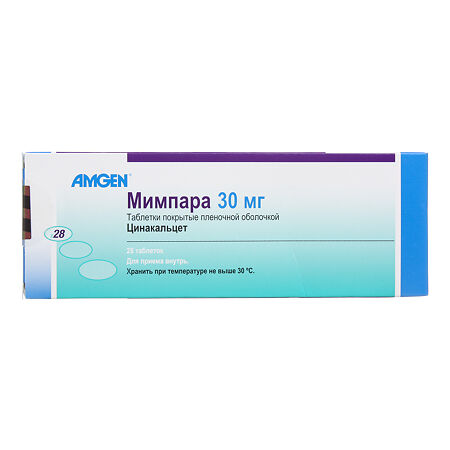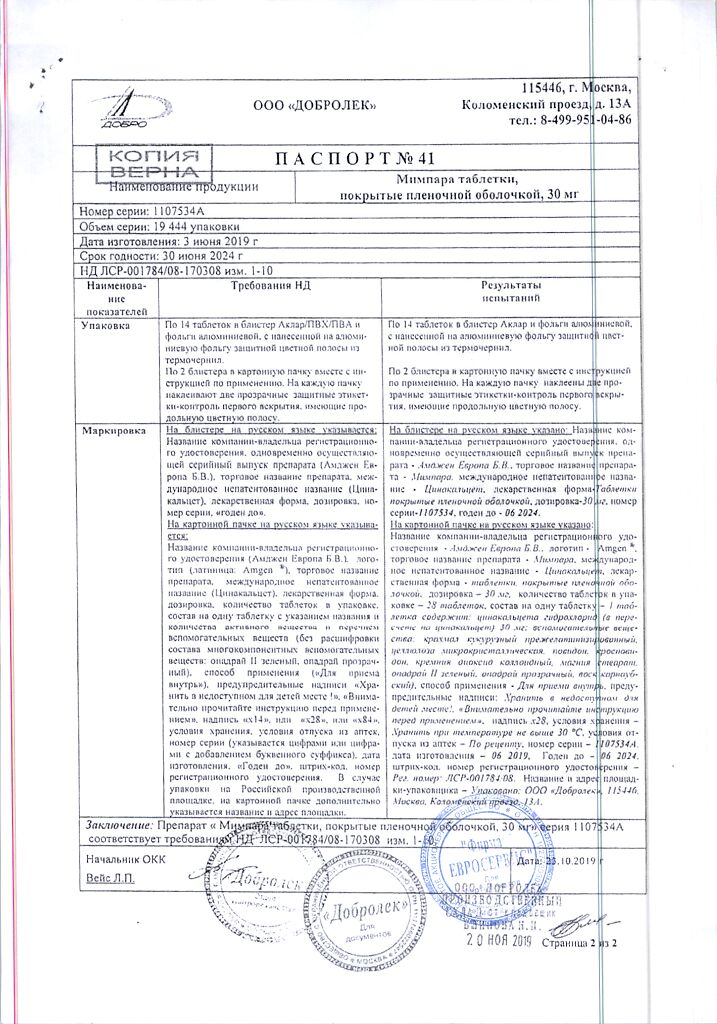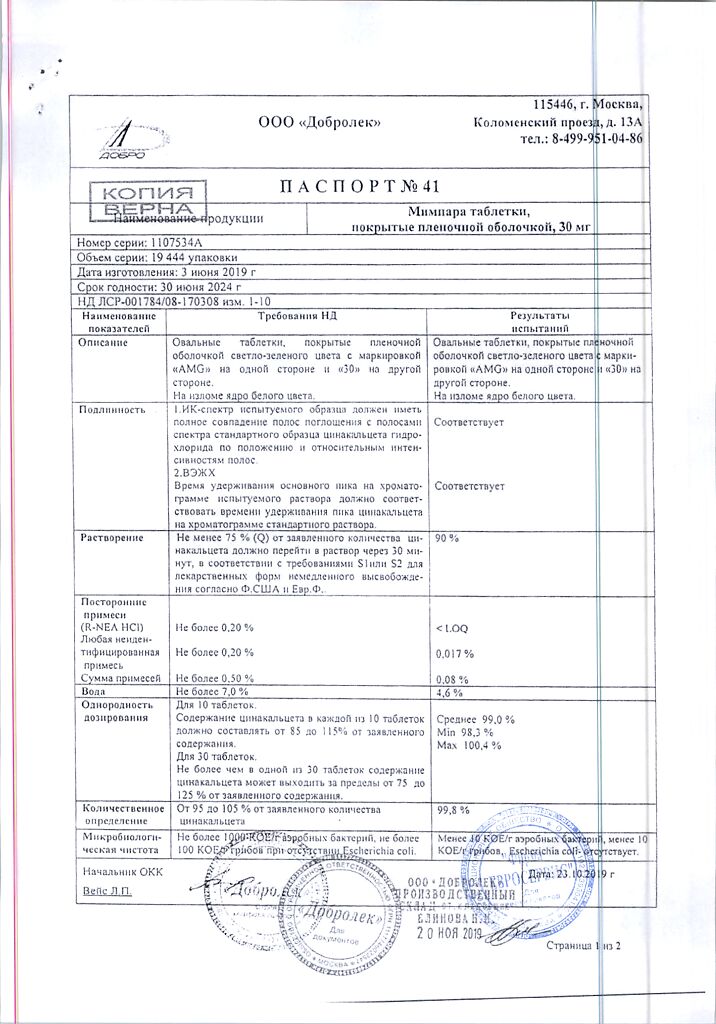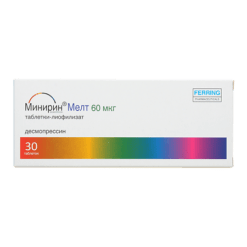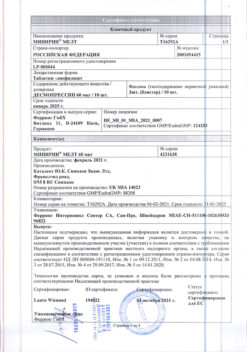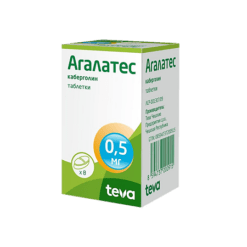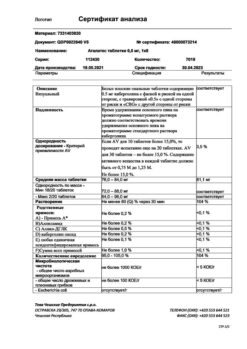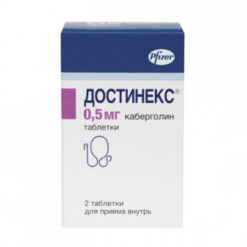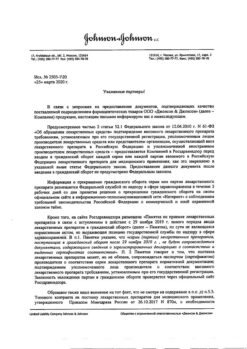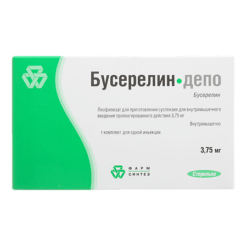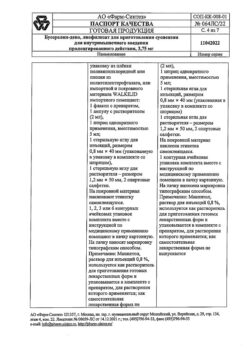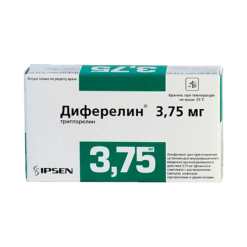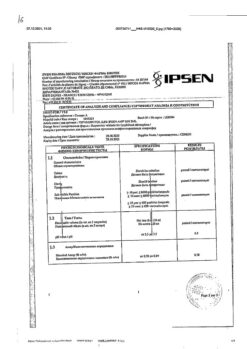No products in the cart.
Mimpara, 30 mg, 28 pcs.
€1.00
Out of stock
(E-mail when Stock is available)
Description
Mimpara – reducing the level of parathyroid hormone, calciumimimetic.
Pharmacodynamics
The calcium-sensitive receptors on the surface of the main cells of the parathyroid gland are the main regulators of parathyroid hormone (PTH) secretion. Cinacalcet has a calcimimetic effect that directly decreases the concentration of PTH by increasing the sensitivity of this receptor to extracellular calcium. Decrease of PTH concentration is accompanied by decrease of serum calcium content.
The decrease in PTH concentration correlates with the concentration of cinacalcet. Shortly after administration of cinacalcet, PTH concentrations begin to decline, with a maximum decrease occurring approximately 2-6 hours after the dose is administered, corresponding to the maximum concentration of cinacalcet (Cmax). Thereafter, the cinacalcet concentration begins to decrease and the PTH concentration increases for 12 h after the dose, and then the PTH suppression remains at approximately the same level until the end of the daily interval on the once-daily dosing regimen. PTH concentrations in clinical studies of Mimpara were measured at the end of the dosing interval.
After reaching a state of equilibrium, serum calcium concentrations remain constant throughout the interval between doses of the drug.
Secondary hyperparathyroidism
Three 6-month clinical trials (double-blind, placebo-controlled) included patients with end-stage renal failure on dialysis with uncontrolled secondary hyperparathyroidism (1136 patients). The mean initial intact parathyroid hormone (iPTH) concentrations in the three clinical trials were 733 and 683 pg/mL (77.8 and 72.4 pmol/L) in the cinacalcet and placebo groups, respectively; 66% of patients were taking vitamin D before study inclusion, and >90% were taking phosphate-binding medications. Patients taking cinacalcet had significant reductions in serum calcium and phosphorus and calcium-phosphorus product (Ca×P) concentrations compared with patients in the placebo group who received standard therapy. The decrease in iPTH and Ca×P concentrations was maintained throughout 12 months of therapy. Cinacalcet reduced iPTH, calcium and phosphorus, and Ca×P concentrations regardless of initial iPTH or Ca×P concentrations, dialysis mode (peritoneal dialysis versus hemodialysis), duration of dialysis, and whether or not vitamin D was used.
Decreased PTH concentrations were associated with non-significant decreases in bone metabolic markers (specific bone alkaline phosphatase, N-telopeptides, bone renewal, and bone fibrosis). In a retrospective analysis of the pool of data collected from 6- and 12-month clinical trials using the Kaplan-Meier method, rates of bone fractures and parathyroidectomies were lower in the cinacalcet group compared with the control group.
Preliminary studies in patients with chronic kidney disease (CKD) and secondary hyperparathyroidism who are not on dialysis indicate that cinacalcet reduced PTH concentrations in a similar manner as patients diagnosed with terminal renal failure (TKF) and secondary hyperparathyroidism who are on dialysis. However, for patients with pre-dialysis renal failure, the efficacy, safety, optimal dosages, and target values of therapy have not been established. These studies have shown that patients with CKD not on dialysis receiving cinacalcet have a greater risk of developing hypocalcemia compared with dialysis patients with end-stage renal failure receiving cinacalcet, which may be due to lower initial calcium concentration and/or residual renal function.
Parathyroid carcinoma and primary hyperparathyroidism (PTH)
. In the main study, 46 patients (29 patients diagnosed with parathyroid carcinoma, and 17 with primary GPT (in whom parathyroidectomy failed or was contraindicated) received cinacalcet for up to 3 years (mean of 328 days for patients with parathyroid carcinoma and 347 days for patients with primary GPT).
Cinacalcet was used in doses ranging from 30 mg 2 times daily to 90 mg 4 times daily. The primary goal of therapy was to reduce serum calcium concentrations by ≥1 mg/dL (≥0.25 mmol/L). In patients with parathyroid carcinoma, the mean calcium concentration decreased from 14.1 to 12.4 mg/dL (3.5 to 3.1 mmol/L), whereas in patients with primary HTP, the serum calcium concentration decreased from 12.7 to 10.4 mg/dL (3.2 to 2.6 mmol/L). Eighteen of 29 patients (62%) with parathyroid carcinoma and 15 of 17 patients (88%) with primary GPT achieved a reduction in serum calcium concentration of ≥1 mg/dL (≥0.25 mmol/L).
Pharmacokinetics
After oral administration of Mimpara, the maximum concentration (Cmax) of cinacalcet in plasma is reached after approximately 2-6 hours. Absolute bioavailability of cinacalcet when taken on an empty stomach, established on the basis of comparison of the results of various studies, was approximately 20-25%. Administration of Mimpara with food increased the bioavailability of cinacalcet by approximately 50-80%. A similar increase in the plasma concentration of cinacalcet was observed regardless of the fat content of the food. The decrease in cinacalcet concentration occurs in two steps; the initial elimination half-life is approximately 6 h, the final elimination half-life is 30 to 40 h. The equilibrium state is reached within 7 days with minimal cumulation. The increase in the area under the concentration-time curve (AUC) and Cmax of cinacalcet occurs almost linearly in the dosing range of 30-180 mg once daily. At dosages above 200 mg there is a saturation of absorption, probably due to poor solubility. Pharmacokinetic parameters of cinacalcet do not change with time. There is a high volume of distribution (approximately 1000 L), indicating extensive distribution. Cinacalcet is approximately 97% bound to plasma proteins and distributed at a minimal level in erythrocytes. Cinacalcet is metabolized by microsomal liver enzymes, predominantly CYP3A4 and CYP1A2 (the role of CYP1A2 has not been confirmed by clinical methods). The major circulating metabolites are inactive. According to in vitro studies, cinacalcet is a potent inhibitor of CYP2D6; however, at concentrations achieved under clinical conditions, cinacalcet does not inhibit activity of other CYP enzymes, including CYP1A2, CYP2C8, CYP2C9, CYP2C19 and CYP3A4, and is also not an inducer of CYP1A2,CYP2C19 and CYP3A4. After administration of a 75 mg radioisotope-labeled dose to healthy volunteers, cinacalcet underwent rapid and significant oxidative metabolism followed by conjugation. Excretion of radioactivity occurred mainly through excretion of metabolites through the kidneys. Approximately 80% of the administered dose was found in the urine and 15% in the feces.
Elderly: No clinically significant differences related to the age of patients were observed in the pharmacokinetics of cinacalcet.
Renal failure: The pharmacokinetic profile of cinacalcet in mild, moderate and severe renal failure, and in hemodialysis or peritoneal dialysis, is comparable to the pharmacokinetic profile of the drug in healthy volunteers.
Hepatic impairment: Mild hepatic impairment has no detectable effect on the pharmacokinetics of cinacalcet. Compared to the group with normal hepatic function, mean AUC values of cinacalcet were approximately 2 times higher in the group with moderate hepatic impairment, and approximately 4 times higher in severe hepatic impairment. The mean half-life of cinacalcet in patients with moderate and severe hepatic impairment was prolonged by 33 and 70%, respectively. Hepatic insufficiency does not affect the degree of cinacalcet binding to proteins. Since the dosage selection is carried out on the basis of efficacy and safety parameters, no additional dose adjustment is required for patients with hepatic insufficiency (see sections “Dosage and administration”, “Special indications”).
Gender: clearance of cinacalcet may be lower in women than in men. Because doses are adjusted individually, there is no need to make additional dose adjustments based on the gender of the patient.
Children: The pharmacokinetics of cinacalcet have been studied in 12 children (6-17 years) with CKD on dialysis after a single oral dose of 15 mg. The mean AUC and Cmax values (23.5 (range, 7.22 to 77.2) ng/h/mL and 7.26 (range, 1.80 to 17.4) ng/mL, respectively) were within approximately 30% of the mean AUC and Cmaxobserved in one study in healthy adults after a single oral dose of 30 mg of the drug (33.6 (range, 4.75 to 66.9) ng/h/mL and 5.42 (range, 1.41 to 12.7) ng/mL, respectively). Because of the limited data in children, potentially greater exposure to a given dose of cinacalcet in younger children with lower body weights than in older children with higher body weights cannot be ruled out. The pharmacokinetics of repeated doses in children have not been studied.
Smoking: Clearance of cinacalcet is higher in smokers than in nonsmokers. This appears to be due to induction of metabolism involving CYP1A2. If the patient stops or starts smoking during therapy, plasma concentrations of cinacalcet may change and a dose adjustment may be required.
Preclinical safety studies
Preclinical studies have shown no genotoxic or carcinogenic potential for cinacalcet. The safe range, according to toxicology studies, is quite narrow because hypocalcemia was a dose-limiting factor in animal experiments. The development of cataracts and lens opacity were observed in toxicological and carcinogenic studies on rodents with multiple doses administered. However, such phenomena have not been observed in experiments on dogs or monkeys or in clinical studies where cataract formation has been monitored. It is known that in rodents, cataracts can occur as a consequence of hypocalcemia.
Indications
Indications
Secondary hyperparathyroidism in patients with end-stage renal failure on dialysis. Mimpara may also be administered as part of combination therapy including phosphate-binding drugs and/or vitamin D;
Hypercalcemia in patients (to reduce severity) caused by the following conditions: parathyroid carcinoma; primary hyperparathyroidism if, despite serum calcium concentrations, parathyroidectomy is clinically unacceptable or contraindicated.
Active ingredient
Active ingredient
Composition
Composition
Active ingredient:
Cinacalcet hydrochloride 30 mg;
Ancillary substances:
Pregelatinized corn starch;
MCC;
povidone;
crospovidone;
magnesium stearate;
colloidal silicon dioxide;
p> carnauba wax;
Green opadray II (lactose monohydrate, hypromellose 15cP, titanium dioxide, triacetin, indigo carmine aluminum varnish, iron oxide yellow); opadray clear (hypromellose 6cP, macrogol 400)
How to take, the dosage
How to take, the dosage
Ingestion, with meals or shortly after a meal, since studies have shown that the bioavailability of cinacalcet increases when the drug is taken with food (see section “Pharmacokinetics”). The tablets should be taken whole without chewing or splitting.
Hepatic impairment
In patients with hepatic impairment, no adjustment of the initial dose is required. Mimpara should be administered with caution in patients with moderate to severe hepatic insufficiency. Close clinical observation of the patient is required during dose adjustment (titration) and during continuation of therapy (see sections “Special indications” and “Pharmacokinetics”).
Secondary hyperparathyroidism
Adults and the elderly (>65 years): The recommended starting dose of Mimpara for adults is 30 mg once daily. Titration of the dose of Mimpar should be performed every 2-4 weeks to a maximum dose of 180 mg (once daily) at which the target PTH concentration of 150-300 pg/ml (15.9-31.8 pmol/L) determined by IPTG concentration is achieved in dialysis patients. PTH concentrations should be determined no sooner than 12 hours after administration of Mimpar. Current recommendations should be followed when evaluating PTH concentrations.
PTH concentrations should be determined 1-4 weeks after starting therapy or adjusting the dose of Mimpar. When taking a maintenance dose, PTH concentrations should be monitored approximately once every 1 to 3 months. For determination of PTH concentration, the content of iPTH or biointact PTH (biPTH) can be used; therapy with Mimpara does not change the ratio between iPTH and biPTH.
When titrating the dose, serum calcium concentration should be monitored frequently, including 1 week after starting therapy or adjusting the dose of Mimpar. When the target PTH concentration is reached and the patient is switched to a maintenance dose, serum calcium concentrations should be assessed approximately once a month. If serum calcium concentrations fall below the normal range, appropriate measures should be taken, including correction of concomitant therapy (see section “Special Instructions”).
Parathyroid carcinoma and primary hyperparathyroidism
Adults and the elderly (>65 years): The recommended starting dose of Mimpara for adults is 30 mg, the frequency of administration is 2 times per day. Titration of Mimpar dose should be carried out in 2-4 weeks increments as follows: 30 mg 2 times a day; 60 mg 2 times a day; 90 mg 2 times a day and 90 mg 3 or 4 times a day as needed to reduce serum calcium concentration to the upper limit of normal range or lower. The maximum dose used in clinical trials was 90 mg at 4 times daily.
Serum calcium concentrations should be determined 1 week after initiation of therapy or the dose adjustment step of Mimpara.
When the target PTH concentration is reached and the patient switches to a maintenance dose, serum calcium concentrations should be assessed every 2-3 months. Upon completion of the titration period to the maximum dose, periodic monitoring of serum calcium concentrations should be performed.
If clinically significant reduction in serum calcium concentrations is not achieved on the maintenance dose, discontinuation of therapy with Mimpara should be considered (see section “Pharmacodynamics”).
Interaction
Interaction
The effect of concomitant use of other drugs on the pharmacokinetics of cinacalcet
Cinacalcet is partially metabolized by the CYP3A4 enzyme. Concomitant administration of 200 mg of ketoconazole 2 times daily (a potent CYP3A4 inhibitor) resulted in an increase in concentrations of cinacalcet by approximately 2-fold. If concomitant administration of potent inhibitors (e.g., ketoconazole, itraconazole, telithromycin, voriconazole, ritonavir) or inducers (e.g., rifampicin) of CYP3A4 is required, a dose adjustment of Mimpara may be required (see “Special Indications”).
The data obtained from in vitro experiments indicate that cinacalcet is partially metabolized by the enzyme CYP1A2. Smoking stimulates CYP1A2 activity. It has been noted that the clearance of cinacalcet is 36-38% higher in smokers than in nonsmokers. The effect of CYP1A2 inhibitors (fluvoxamine, ciprofloxacin) on the plasma concentrations of cinacalcet has not been studied. Dose adjustment may be required if the patient starts or stops smoking or starts or stops concomitant use of potent CYP1A2 inhibitors during therapy with Mimpara.
Calcium carbonate: Concomitant use of calcium carbonate (single dose of 1500 mg) did not alter the pharmacokinetics of cinacalcet.
Sevelamer: concomitant use of sevelamer (2400 mg 3 times daily) had no effect on the pharmacokinetics of cinacalcet.
Pantoprazole: concomitant use of pantoprazole (80 mg once daily) did not alter the pharmacokinetics of cinacalcet.
The effect of cinacalcet on the pharmacokinetics of other drugs
Drugs metabolized by CYP2D6 isoenzyme: Cinacalcet is a potent inhibitor of CYP2D6. Concomitant use of cinacalcet and drugs with narrow therapeutic range and/or variable pharmacokinetics metabolized by CYP2D6 isoenzyme (e.g., flecainide, propafenone, metoprolol, desipramine, nortriptyline, clomipramine) may require adequate dose adjustment of these drugs (see section “Special Precautions”).
Desipramine: concomitant administration of a dose of 90 mg of cinacalcet once daily with 50 mg of desipramine, predominantly metabolized by CYP2D6, significantly increased exposure to desipramine (3.6-fold) (90% confidence interval 3.0, 4.4) in patients with active CYP2D6 metabolism.
Warfarin: Repeated oral administration of cinacalcet had no effect on the pharmacokinetics or pharmacodynamics of warfarin (PV and factor VII activity were measured).
The lack of effect of cinacalcet on the pharmacokinetics of R- and S-warfarin and the absence of enzyme autoinduction in patients after repeated administration of the drug indicates that cinacalcet is not an inducer of CYP3A4, CYP1A2 or CYP2C9 in humans.
Midazolam: Concomitant use of cinacalcet (90 mg) and oral midazolam (2 mg), a substrate of CYP3A4 and CYP3A5, does not affect the pharmacokinetics of midazolam. These data indicate that cinacalcet has no effect on the pharmacokinetics of a class of drugs metabolized by CYP3A4 and CYP3A5 isoenzymes, such as some immunosuppressants, including cyclosporine and tacrolimus.
Incompatibilities. Not applicable.
Special Instructions
Special Instructions
Convulsions
In three studies involving patients with chronic kidney disease (CKD) and on dialysis, 5% of patients in each group receiving Mimpara or placebo had seizures at the start of therapy. In these studies, seizures were reported in 1.4% of patients receiving Mimpara and 0.4% of patients in the placebo group. Although the reasons for the reported differences in the occurrence of seizures are unclear, the seizure threshold is lowered with a significant decrease in serum calcium concentration.
Hypotension and/or worsening of the course of heart failure
. In patients with heart failure taking cinacalcet during post-marketing observations there have been isolated idiosyncratic cases of hypotension and/or worsening course of heart failure in which a causal relationship to cinacalcet cannot be completely excluded and may be due to decreased serum calcium levels. Clinical trial data showed that hypotension occurred in 7% of patients receiving cinacalcet and 12% of patients receiving placebo, and heart failure occurred in 2% of patients receiving cinacalcet or placebo.
Serum calcium
Therapy with Mimpara should not be given when the serum calcium concentration (adjusted for albumin) is below the minimum limit of the normal range. Since cinacalcet decreases the serum calcium concentration, careful monitoring is required with respect to the development of hypocalcemia (see section “Dosage and administration”). In patients diagnosed with CKD who are on dialysis while taking Mimpara, the serum calcium concentration was lower than 7.5 mg/dL (1.875 mmol/L) in 4% of cases. In case of hypocalcemia, calcium-containing phosphate-binding drugs, vitamin D and/or correction of calcium concentration in dialysis solution can be used to increase serum calcium concentration. In case of persistent hypocalcemia, the dose should be reduced or Mimpara should be discontinued. Paresthesias, myalgias, seizures and tetany may be potential signs of hypocalcemia.
Cinacalcet is not indicated in patients diagnosed with CKD who are not on dialysis. Preliminary studies have shown that patients diagnosed with CKD who are not on dialysis have an increased risk of developing hypocalcemia (serum calcium concentration
General
If PTH concentration is chronically suppressed below a concentration of approximately 1.5 of the upper limit of normal as measured by IPTG, adynamic bone disease may develop. If PTH concentrations fall below the recommended range, the dose of Mimpara and/or vitamin D should be reduced, or therapy should be discontinued.
Testosterone concentrations
Testosterone concentrations are often below normal in patients with end-stage renal failure. Data from a clinical trial that included patients with TSPN and on dialysis showed that free testosterone concentrations decreased by an average of 31.3% in patients taking Mimpara and by 16.3% in patients in the placebo group after 6 months of therapy. The open prolonged phase of this study showed no further decrease in free and total testosterone concentrations in patients over the 3-year period of treatment with Mimpara.
The clinical significance of decreased serum testosterone levels has not been established.
Hepatic failure
The drug should be prescribed with caution in patients with moderate to severe hepatic failure (according to Child-Pugh classification), because plasma concentrations of cinacalcet may be 2-4 times higher; close monitoring during treatment is necessary (see “Dosage and administration”, “Pharmacokinetics”).
Lactose
Mimpara contains lactose as an excipient (each 30 mg tablet contains 2.74 mg lactose, each 60 mg tablet contains 5.47 mg lactose, each 90 mg tablet contains 8.21 mg lactose). Patients with rare hereditary galactose intolerance, Lapp lactase deficiency or impaired glucogalactose absorption should not take the drug.
Influence on the ability to drive or operate complex mechanisms.Studies to study the effect of the drug on the ability to drive or operate complex mechanisms have not been conducted. However, some adverse reactions may affect the ability to drive or operate complex machinery (see “Adverse effects”).
Contraindications
Contraindications
Hypersensitivity to the active ingredient or any other component of the drug; children under 18 years of age (efficacy and safety have not been studied).
Side effects
Side effects
Secondary hyperparathyroidism
In controlled clinical trials, data were obtained in 656 patients taking Mimpara and 470 patients taking placebo for up to 6 months. The most common adverse reactions were nausea and vomiting, which occurred in 31% of patients in the Mimpara group and 19% of patients in the placebo group, respectively, and in 27% of patients in the Mimpara group and 15% of patients in the placebo group.
The nausea and vomiting were mild to moderate in severity and in most cases were transient. Discontinuation of therapy due to adverse reactions was mainly caused by nausea (1% in the placebo group; 5% in the cinacalcet group) and vomiting (
The adverse reactions associated with cinacalcet use that occurred more frequently in the Mimpara group compared to the placebo group in double-blind clinical trials are as follows very common (>1/10); common (>1/100 to1/1000 to1/10000 to
Immune system disorders: sometimes hypersensitivity reactions.
Metabolism and food intake: often – anorexia.
Nervous system disorders: often – dizziness, paresthesias; sometimes – seizures.
Gastrointestinal system: very often – nausea, vomiting; sometimes – dyspepsia, diarrhea.
Skin and subcutaneous tissue: often – rash.
Skeletal musculature, connective tissue and bone system: often – myalgia.
General disorders and reactions to the drug: often – asthenia.
Laboratory findings: often – hypocalcemia (see section “Special Precautions”), decreased testosterone levels (see section “Special Precautions”).
Parathyroid carcinoma and primary hyperparathyroidism
The safety profile of Mimpar in these patient populations is generally consistent with that seen in patients with chronic kidney disease. In these populations, the most common adverse reactions were nausea and vomiting.
Post-marketing observational studies
When Mimpara was used in routine practice, the following adverse reactions were identified, the frequency of which cannot be estimated from the available data:
Overdose
Overdose
Doses titrated to 300 mg (once daily) are safe in dialysis patients.
Symptoms: Overdose with Mimpara may lead to hypocalcemia. In case of overdose patients should have their calcium concentrations monitored, for timely detection of hypocalcemia.
Treatment: symptomatic and supportive therapy should be carried out. Since the degree of binding of cinacalcet to proteins is high, cinacalcet is not excreted by hemodialysis, i.e. hemodialysis in overdose is not effective.
Additional information
| Shelf life | 4 years |
|---|---|
| Conditions of storage | At a temperature not exceeding 30 °C. |
| Manufacturer | Amgen Manufacturing Limited, Netherlands |
| Medication form | pills |
| Brand | Amgen Manufacturing Limited |
Related products
Buy Mimpara, 30 mg, 28 pcs. with delivery to USA, UK, Europe and over 120 other countries.

